Anna Baker Southall
Anna Elizabeth Baker, the eldest daughter of Anna Jane Brady (1834-1893) and John Edward Baker (1828-1908), was born in King’s Norton, Worcestershire on 1st February 1859. John Baker a member of the Society of Friends ran a large blacking factory in Birmingham. A Quaker philanthropist, John Baker, was a member of Temperance Society and the Liberal Party and served as a Councillor on Birmingham Town Council (1872-1882). John’s elder brother George Baker (1825-1910), replaced Joseph Chamberlain as Mayor of Birmingham in June, 1876. (1)
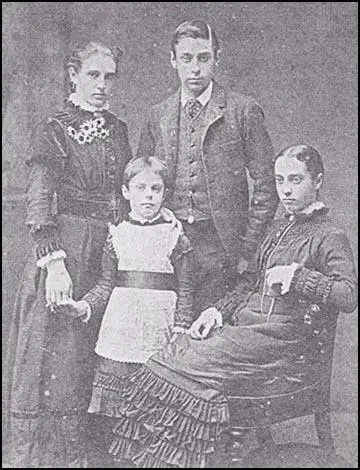
Anna Baker had four younger siblings. On 21st July 1884 one of her sisters, Margaret, aged 22, and her cousin, Lilian Baker, aged 20, were drowned whilst bathing together at Llanaber North Wales. According to a local newspaper: "On the shore under Llanaber Church... where the beach is almost as smooth as a lawn, and the slope seawards nearly imperceptible... In comparatively shallow water, within a short distance of the land, and in sight of their relatives, two young lady visitors from Birmingham were drowned while bathing, and their bodies washed ashore." (2)
In 1884 Anna went on a riding tour of the Midlands with her first-cousin, the artist, Joseph Southall . At this time he began painting portraits of Anna. An important influence was Hans Holbein. Southall made a special study of Holbein's drawings at Basle. He regarded his portraits as one of his major achievements. George Breeze argues: "The tempera technique is used here as a means of capturing the sitter's character, and not simply as an end in his own right. On the other hand the painstaking nature of this technique can lead to an air of frozen monumentality in Southall's portrayal of his sisters." (3)
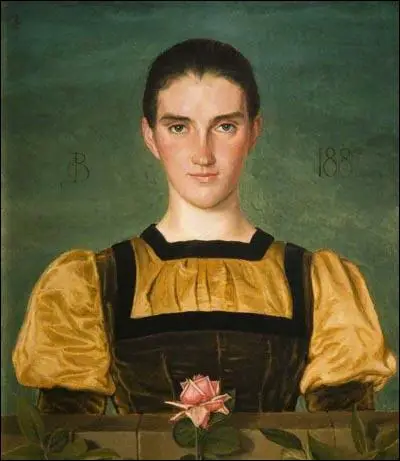
Joseph Southall recognised that most surviving Italian tempera paintings were painting on wooden panels, so his earliest efforts were done on some panels cut from an old door. He pained the panels "in the ordinary house-painter's manner with cream-coloured oil paint". Unfortunately the tempera began to peel and flake from the greasy and insufficiently porous surface. Later, he discovered that he needed to coat the panels with gesso (hydrated calcium sulphate). Anna helped him with this and she "applied 6 or 8 coats to the panel" which was "finished smooth like ivory, and washed with weak size to stop absorbancy". (4)
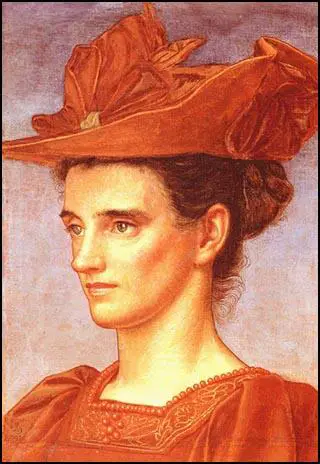
In 1895 he painted a portrait of Anna Baker entitled The Coral Necklace. "The portrait provides a unique document of Southall's working methods, no other known painting of his bearing so many notes. In this documentation he was following the practice of the Pre-Raphaelite painters... The title is most apposite, since it is the coral necklace that gives the colour key to the whole portrait." (5)
In June 1903 Joseph Southall married Anne Baker. Joseph and Anne (known as Bessie) lived at 13 Charlotte Road, Edgbaston, a house which belonged to his uncle, George Baker, which was to be his home for the rest of his life. Although both were fond of children they made a conscious decision not to have any themselves. (6) According to Peyton Skipwith: "She (Anne) was forty-four and he nearly forty-two; they had been intimate friends and companions for many years and had always intended to marry, but because of their close kinship had consciously waited until she was passed child-bearing age." (7)
Anna frequently accompanied him on his regular visits to "Southwold, Suffolk, or Fowey, Cornwall, and to Italy or France, where Southall produced many boat studies and landscapes. In Italy he saw many examples of mural painting and was keen to promote the use of buon fresco, or true fresco, in Britain to enhance public buildings as they did in Italy." (8)
In 1911 Joseph Southall painted The Agate: Portrait of the Artist and his Wife while on holiday in Southwald. Joseph wears a dark knickerbocker suit and his wife is clad in a grey-brown woollen dress offset by a black-and-white silk stole with tassels and a highly fashionable hat. "The impact of this picture is no doubt due in part to the extraordinary nature of the scene: the artist and his wife standing full length at the water's edge on a beach, in their smartest clothes, with the latter popping agate into the outstretched hand of the former, the whole frozen in time." The picture was purchased by Richard Barrow and hung in the lavatory at Barrow's Stores in Birmingham. It was so unpopular it was covered with a mirror. It was later given to the National Portrait Gallery. (9)
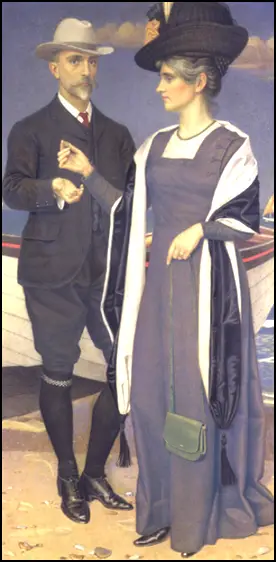
Joseph Southall later explained why he was so committed to this style of painting. "The great merit of true fresco lies in its deligious quality of surface which is like the bloom on a peach, and where you see as in Italy no black dirt but only a cream coloured dust accumulate upon it the effect of time is quite in harmony with the character of the work and even adds to it an additional charm." (10)
Anna and Joseph Southall were pacifists and members of the Liberal Party. However, Joseph was converted to socialism after reading News from Nowhere, a novel by William Morris. (11) Both came from a radical familes. The Baker's, his mother's and Anna's family, were Quakers with strong radical sympathies. On Joseph's side, his grandmother was the sister of Joseph Sturge, an opponent of slavery and a strong supporter of Chartism. (12)
Anna and Joseph Southall were opponents of the 1902 Education Act. The new legislation abolished all 2,568 school boards and handed over their duties to local borough or county councils. These new Local Education Authorities (LEAs) were given powers to establish new secondary and technical schools as well as developing the existing system of elementary schools. At the time more than half the elementary pupils in England and Wales. For the first time, as a result of this legislation, church schools were to receive public funds. (13)
Nonconformists and supporters of the Liberal and Labour parties campaigned against the proposed act. David Lloyd George led the campaign in the House of Commons as he resented the idea that Nonconformists contributing to the upkeep of Anglican schools. It was also argued that school boards had introduced more progressive methods of education. "The school boards are to be destroyed because they stand for enlightenment and progress." (14)
John Clifford became the leader of the campaign against the legislation. Clifford was opposed to Balfour's bill for three main reasons: (a) the rate aid was being used to support the teaching of religious views to which some rate-payers were opposed; (b) sectarian schools, supported by public funds, were not under public control; (c) teachers in sectarian schools were subject to religious tests. Clifford prepared a plan of "Passive Resistance". It was based on the strategy used by John Hampden against Ship Money in 1637 and one of the causes of the English Civil War. "Its tactics were to be those of the old Tithe War: refuse to pay the abhorrent education rate, submit rather to the forced sale of your goods and even of your house; if need be, go to jail!". (15)
Joseph and Anna Southall both became involved in the "passive resistance" campaign. (16) They "refused to pay rates as a form of objection to what they regarded as denominal religious teaching in schools. In the case of the Southalls, the goods seized regularly twice a year by police in lieu of rates were two silver tea-spoons, which were auctioned for 14s, and then returned to Mr Southall in readiness for the next rate payment to fall due." (17)
Joseph Southall often sent letters to newspapers criticising religious, business and political leaders over their views on warfare. In one letter he complained about businessmen justifying the production of armaments as being good for its employees. He argued that the "prosperity of the people of Woolwich during the war time is obtained at the cost of the whole country plunging madly into debt which generations of workers afterwards must painfully repay.... War is nothing but destruction and at best it only benefits the few at the cost of the many. What we want is not the destruction of wealth but the fair distribution of it. War never brings that – as the contractors know very well." (18)
Joseph Southall also contributed drawings for the main anti-war newspaper, the Woman's Dreadnought. It was founded in January 1914 by Sylvia Pankhurst and Norah Smyth, as the newspaper of East London Federation of Suffragettes (ELFS). Pankhurst was a strong opponent of the war. Initially, the ELFS campaigned for women's suffrage but on the outbreak of war accepted that "peace would be the overriding issue in the year to come". (19)
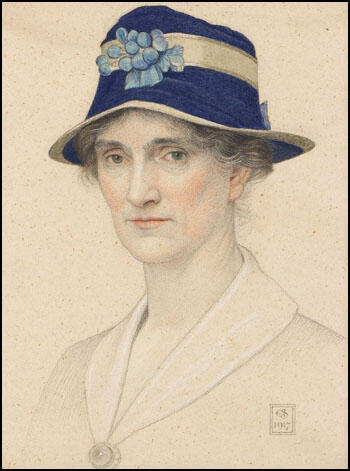
Roger Homan has argued: "Joseph Southall was a Quaker of deep and enduring convictions and scrupulous attention to detail... Southall takes account of these moral principles without rejecting the art in which they were thought to be inherent. On the contrary, he used his art as social critique, he rejoiced in colour as an aspect of the beauty of the created world and he undressed his portrait images of such vain trappings as had tended to cumber the genre." (20)
After the war Anna and Joseph Southall would make regular spring and autumn visits to France and Italy. Every summer they spent time at Southwold in Suffolk. These travels invariably produced a body of work which was regularly shown in exhibitions at the "Alpine or Leicester Galleries in London and the Ruskin Galleries in Birmingham, as well as at the Royal Birmingham Society of Artists, the Royal Academy, and the Paris Salon." (21)
Joseph Southall remained an active member of the Labour Party. He was also a close friend of Dr. Robert Dunstan, who was a member of the Communist Party of Great Britain (CPGB) who was its parliamentary candidate for Birmingham West. (22) In December 1927, Southall and six other members were expelled from the party after refusing to refrain from helping him in his campaign. Southall denied that he was a Communist. "I have never been to Communist Party meetings unless they have been public and I have never subscribed to their funds." (23)
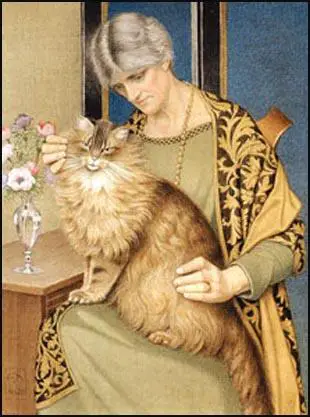
Joseph and Anne Southall made their last trip to Venice in the spring of 1937. Later that year he was taken ill and had to undergo major surgery from which he never fully recovered. His illness, although never accurately diagnosed, necessitated frequent spells in hospital for the remainder of his life. Although in pain he carried on painting. The last painting in tempera on which he was working was a memorial portrait of the Bradford MP, Frederick Jowett (1864-1944), a founder member of the Independent Labour Party. (24)
Joseph Southall died on the 6th November and was buried four days later in the Society of Friends section of Witton Cemetery. The Birmingham Post reported that at his funeral his cousin, Evelyn Sturge, spoke of his courage and "great love of truth, and of his willingness to be unpopular in the cause of truth, and of his care for the downtrodden and for justice." (25)
Anna Elizabeth Southall died on 29th October 1947, leaving effects valued at £16,068 9s 4d. Her nephew, Edward Martin Baker, an agricultural worker (the only child of her deceased brother, Edward Theodore Baker) was named in her will. (26)
Primary Sources
(1) Birmingham Daily Gazette (28th February 1913)
Several passive resisters were included among those who were sumonded at Birmingham Police Court yesterday for non-payment of rates. They were the Rev. T. E. Titmus, the Rev. F. E. Rees, Mr William Noble, Mr Joseph Edward Southall, Mr H. Johnson Ainsworth, Mr C. W. F. Covey, Mr R. Gillis and Mrs Southall and in case an order was made.
Mr. Noble said he refused to pay compulsory for the teaching of dogma which he said, was more in keeping with the dark ages.
(2) Birmingham Daily Gazette (19th February 1914)
More "passive resistance" cases were heard at the Birmingham Police Court yesterday.
An application was made on behalf of Mr Joseph Edward Southall, of Charlotte Road, by Mr Foster Duggan. The amount which the summons had been issued was £7 1s 3d, and Mr Foster Duggan offered a payment of £6 18s 2d, applying that a distress warrant be issued for the balance of 3s 6d, which warrant be issued for the balance of 3s 6d, which his clients were unable to pay on conscientious grounds.
(3) The Birmingham Daily Gazette (30th October 1947)
The widow of one of Birmingham's greatest painters Mrs Anna Elizabeth Southall, died yesterday at her home, 13 Charlotte Road, Edgbaston. She was in her 89th year.
Mr and Mrs Southall were married in 1903. She was formerly Miss Baker, and her husband's cousin. There were no children.
On two occasions she appeared before the magistrates in what became known as "the ceremony of the spoons". Mr Southall was a "passive resister" an organisation whose members refused to pay rates as a form of objection to what they regarded as denominal religious teaching in schools.
In the case of the Southalls, the goods seized regularly twice a year by police in lieu of rates were two silver tea-spoons, which were auctioned for 14s, and then returned to Mr Southall in readiness for the next rate payment to fall due.
When because of illness, her husband could not appear to make her objection at the Victoria Courts, Mrs Southall went in his stead.
(4) David Simkin, Family History Research (4th March, 2023)
Anne Anna Elizabeth Baker was born in King’s Norton, Worcestershire (now part of the City of Birmingham) on 1st February 1859, the eldest daughter of Anna Jane Brady (1834-1893) and John Edward Baker (1828-1908), described as a “Blacking Manufacturer”. (Blacking was used to produce a variety of products, including boot polish, printing inks, and paints). With his older brother, George Baker, John Edward Baker ran a large blacking factory in Birmingham (Edward Baker & Sons), a business established by their father Edward Baker (1800-1857). John’s elder brother George Baker (1825-1910), was a Quaker philanthropist and Liberal politician who served as Mayor of Birmingham (1876-77) and Mayor of Bewdley (1888–89). Like his older brother, George, John Edward Baker was a Quaker philanthropist, a member of the Temperance movement and served as a Liberal Councillor on Birmingham Town Council (1872-1882).
Anna Elizabeth Baker had four younger siblings - Maria Baker (1860–1939), Margaret Ellen Baker (1862–1884), Edward Theodore Baker (1867–1940) and Edith Constance Baker (1876–1967).
One of Anna’s sisters, Margaret Ellen Baker died in a tragic accident at the age of 22. Margaret Baker and her cousin, Lilian Rebecca Baker, aged 20 (a daughter of John Edward Baker’s brother, George Baker) were drowned whilst bathing together at Llanaber North Wales, on 21st July 1884.
At the time of the 1881 Census, 22-year-old Anna Elizabeth Baker was staying with her married younger sister, Mrs Maria Allen, at 33 Oakfield Road, Croydon, Surrey. When the next census was taken in 1891, 32-year-old Anna E. Baker was back at the family home at ‘Heath Green’, Dudley Road, Rotton Park, Birmingham. Residing with Anna were her youngest sister, 14- year-old Edith, and her brother, Edward T. Baker, now in charge of the family blacking factory (on the 1891 Census, Edward Baker is recorded as a “Blacklead & Blacking Manufacturer”). Ten years later, 42-year-old Anna and her youngest sister Edith were living with their widowed father at 36 Carpenter Road, Edgbaston, Birmingham. John Edward Baker is recorded on the 1901 Census return as a “Retired Hardware Merchant”, aged 73. No occupation or profession is given for his two unmarried daughters.
John Edward Baker of 36 Carpenter Road, Edgbaston, Birmingham, died on 5th January 1908, leaving effects valued at £26,392 3s 8d. Mrs Anna Elizabeth Southall, Edward Theodore Baker, a carting contractor, and Alfred Henry Allen, miller, (the husband of John Edward Baker’s second eldest daughter, Maria) were named in the will.
When the 1911 Census was taken, Mrs Anna Elizabeth Southall and her husband, Joseph Edward Southall, described on the census form as a 52-year-old “Artist, painter and designer”, were residing at 13 Charlotte Road, Edgbaston, Birmingham. They employed one general servant. Eighteen years later, the 1939 General Register showed that the couple were still living at 13 Charlotte Road, Edgbaston, Birmingham. On the 1939 Register, Joseph Edward Southall is described as an “Artist, Painter & Mural Decorator” and the occupation of his wife, Anna E. Southall, is given as “unpaid domestic duties”.
Student Activities
References
(1) David Simkin, Family History Research (4th March, 2023)
(2) The Cambrian News (25th July 1884)
(3) George Breeze, Joseph Southall, 1861-1944, Artist-Craftsman (1980) page 53
(4) Joseph Southall, Grounds Suitable for Painting in Tempera (1901)
(5) George Breeze, Joseph Southall, 1861-1944, Artist-Craftsman (1980) page 57
(6) George Breeze, Joseph Edward Southall: Oxford Dictionary of National Biography (3rd October 2013)
(7) Peyton Skipwith, Peace, Politics and Painting (January 30, 1992)
(8) George Breeze, Joseph Edward Southall: Oxford Dictionary of National Biography (3rd October 2013)
(9) George Breeze, Joseph Southall, 1861-1944, Artist-Craftsman (1980) page 55
(10) Joseph Southall, The Value of Colour in City Life (8th February, 1921)
(11) George Breeze, Joseph Edward Southall: Oxford Dictionary of National Biography (3rd October 2013)
(12) Justice (20th April 1907)
(13) Roy Hattersley, David Lloyd George (2010) page 148
(14) The Daily News (25th March, 1902)
(15) Frank Owen, Tempestuous Journey: Lloyd George and his Life and Times (1954) page 124
(16) The Birmingham Daily Gazette (30th October 1947)
(17) Birmingham Daily Gazette (28th February 1913)
(18) George Breeze, Joseph Southall, 1861-1944, Artist-Craftsman (1980) page 102
(19) The Women's Dreadnought (16th December 1915)
(20) Roger Homan, The Art of Joseph Edward Southall (2000) page 72
(21) Peyton Skipwith, Peace, Politics and Painting (January 30, 1992)
(22) Martin Pugh, Speak for Britain!: A New History of the Labour Party (2011) page 133
(23) The Westminster Gazette (10th December 1927)
(24) Peyton Skipwith, Peace, Politics and Painting (January 30, 1992)
(25) The Birmingham Post (11th November, 1944)
(26) David Simkin, Family History Research (4th March, 2023)

